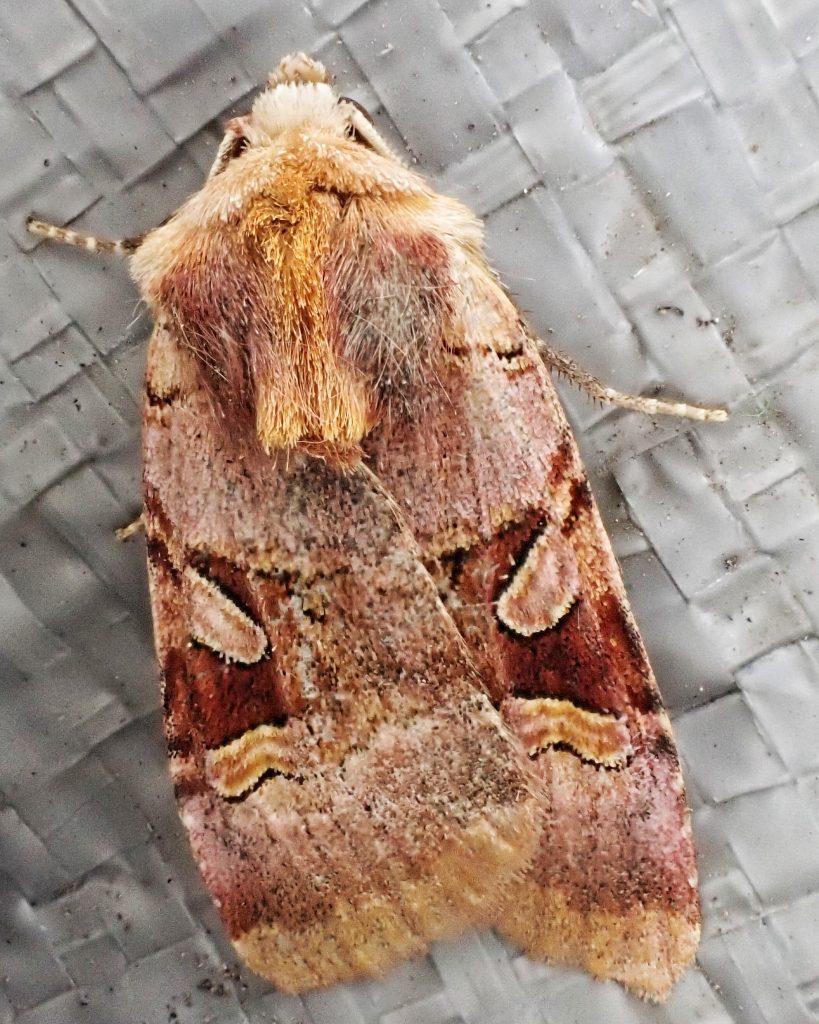
The first one of these Noctuid moths that I found on the excursion I described in ‘A Trip to Mt. Adams ‘ was somewhat worn, but distinct enough that I knew I’d never seen one before, although it turns out that Xestia oblata are said to be common. But the second one was a ‘wow’ moth to me, a fresh moth that was strikingly colored and with a very pronounced reniform spot. I flipped through the darts in “Pacific Northwest Insects”, which is unfortunately the closest thing to a moth field guide that I have (since Seabrooke Leckie’s much anticipated field guide to western moths has been delayed), but to no avail.
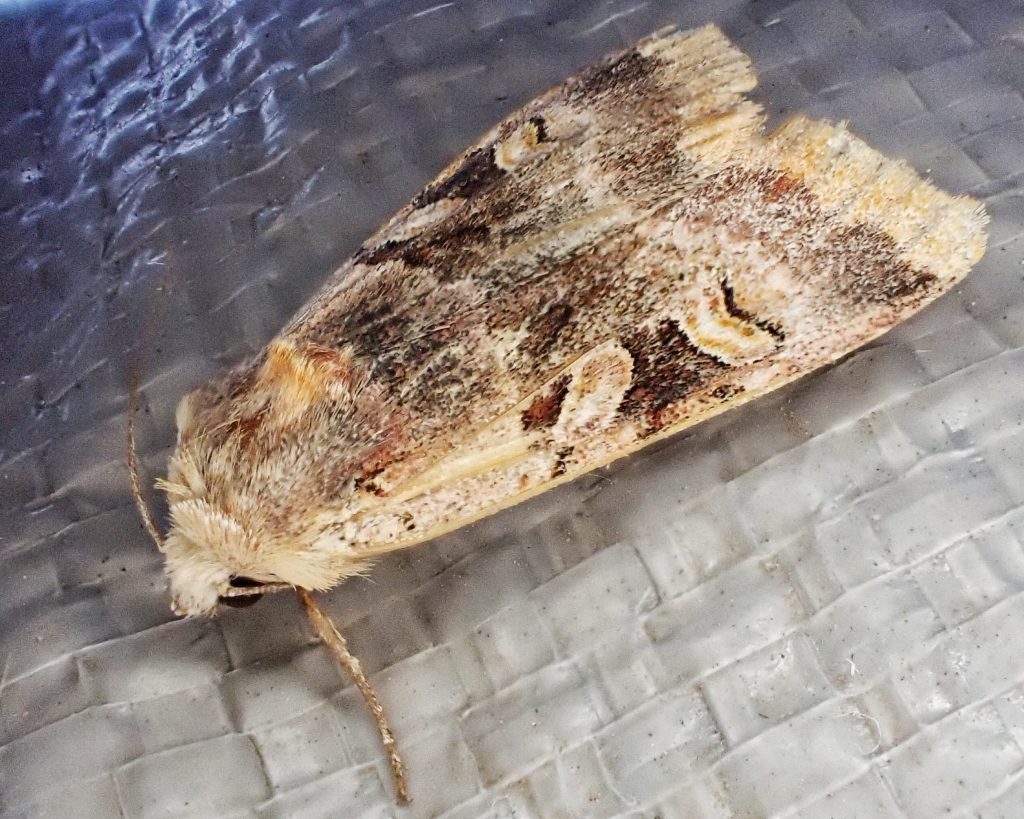
Then I remembered that, due to some quirk of the atmosphere or my elevation above ridges in more populated areas, I actually had 4g service, so I looked up Diarsia rosaria on Moth Photographer’s Group, since it reminded me somewhat of a much more brightly and vividly colored specimen of that species, and I was clueless as to its actual genus and needed a starting point. And I got lucky and went in the right direction from there, because in less than 5 minutes I came across Xestia oblata, which rang all the right bells. And a perusal of the entry for this moth on PNW Moths confirmed that I had a winner.
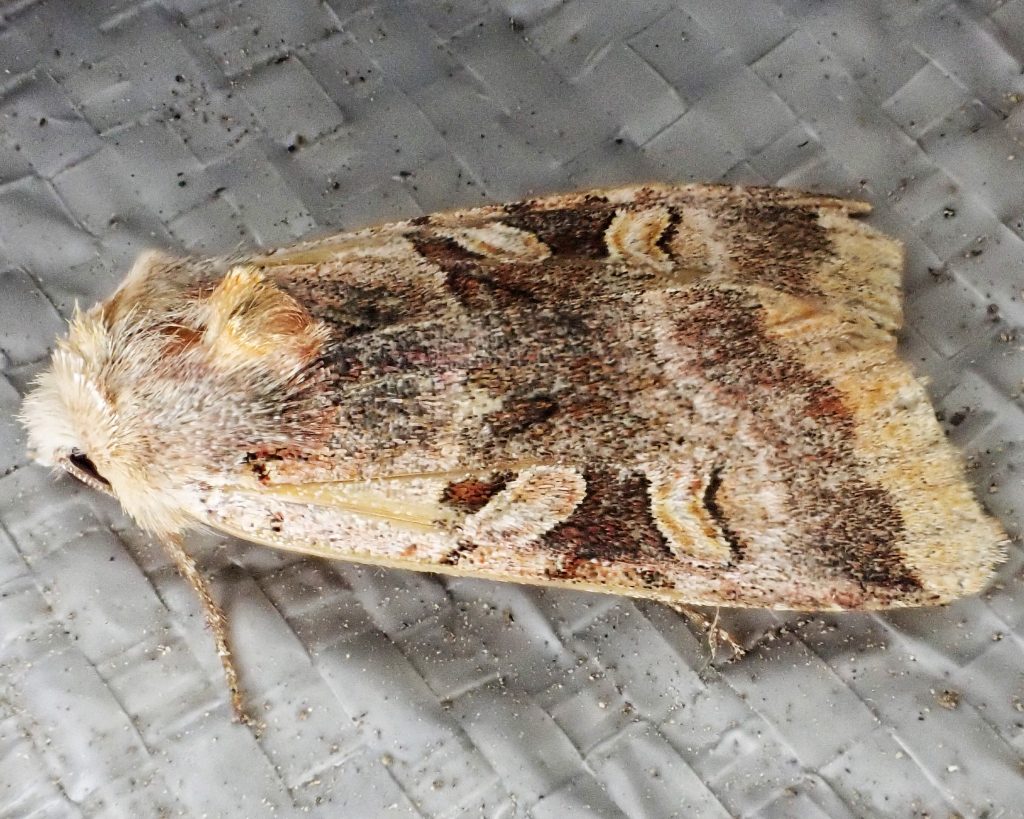
Description– Forewing length 16-18mm; “A medium-size compact rusty-orange noctuid moth. Forewings reddish or rusty orange and hindwings pale yellow-orange. The forewings are crossed by paler antemedian and postmedian lines, and the median area between the two is mostly darker red-brown. The terminal area beyond the postmedian line is divided into a darker basal half and a lighter orange terminal half. The orbicular and reniform spots are large and prominent, lighter orange than the associated ground, and somewhat angular.” Xestia oblata – University of Alberta Museums Search Site
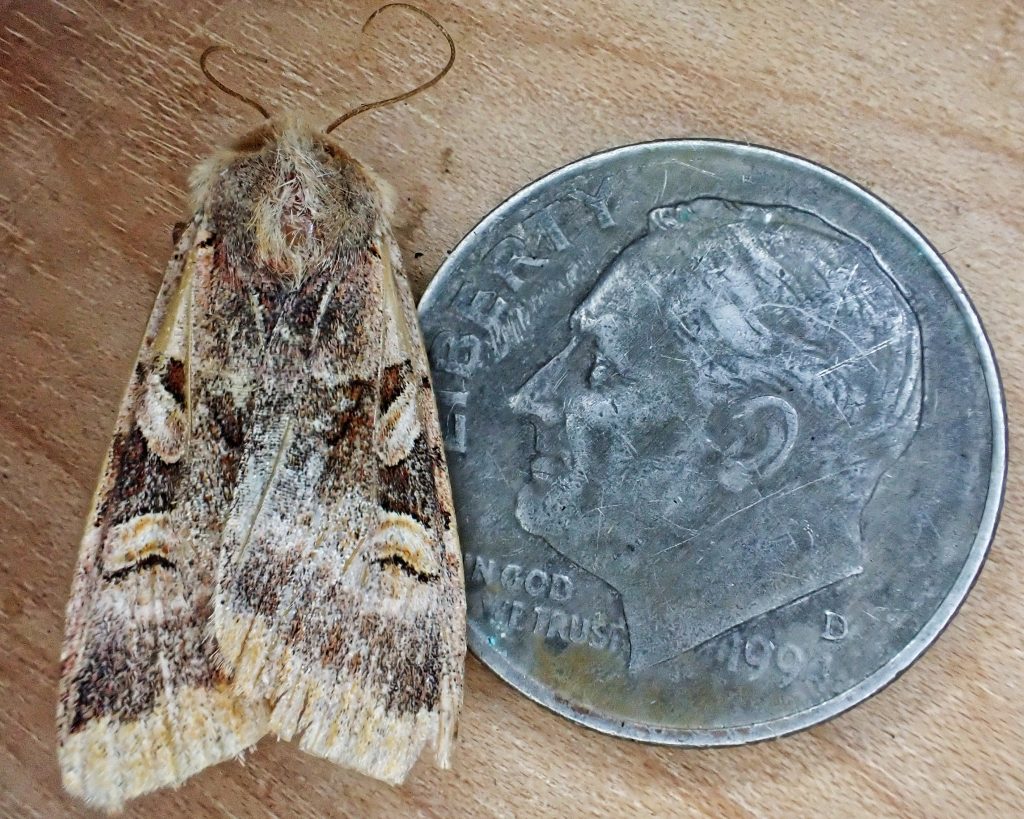
Similar species– “the combination of broad orange terminal band and flattened & pointed reniform spot distinguishes this species from all others.” Species Xestia oblata – Rosy Dart – Hodges#10947 – BugGuide.Net; This species is unmistakable due to its colorful red and orange forewing and light yellow hindwing, head, and collar.” PNW Moths | Xestia oblata
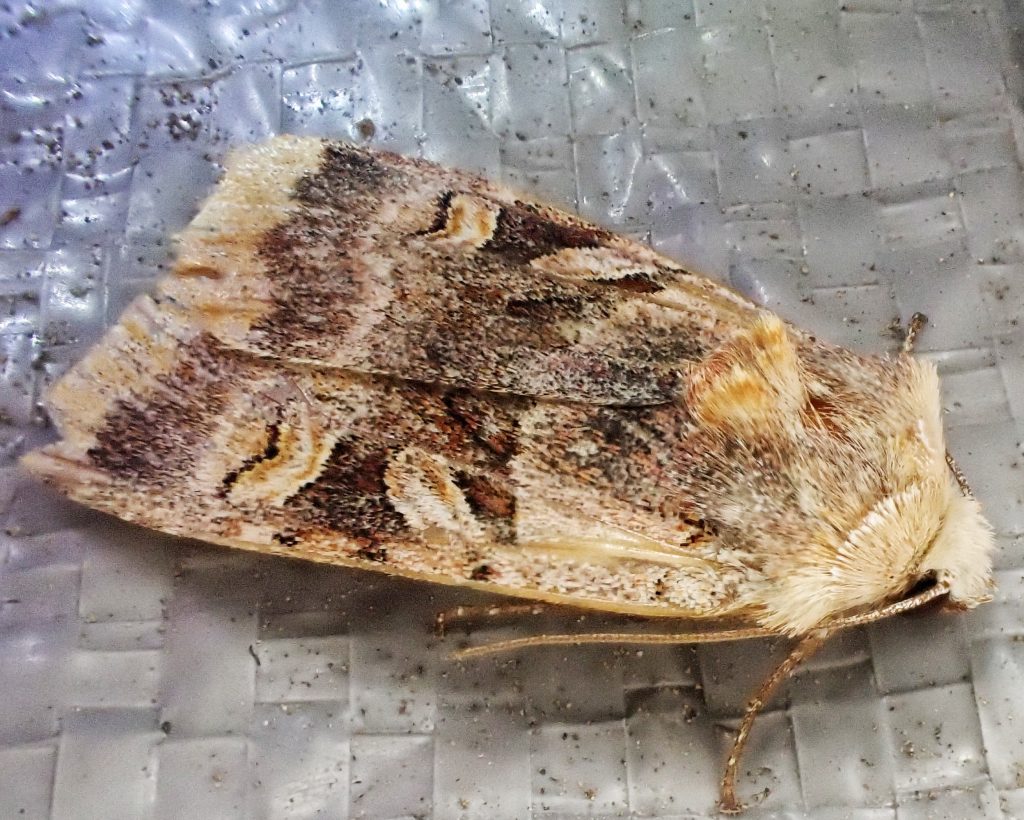
Habitat– “This species is widely distributed across Canada and throughout the mountains of western North America in moist hardwood and conifer forests. In the Pacific Northwest, it is moderately common in coastal rainforests, oak woodlands, mixed hardwood forests, and mixed hardwood-conifer forests at low to middle elevations west of the Cascades. It is also common in spruce-fir forests at high elevations along the summit of the Cascades, in ponderosa pine forests at middle elevations east of the Cascades, and in quaking aspen forests of the Rocky Mountain region. A disjunct population occurs in quaking aspen forests at high elevations along the summit of the Steens Mountains in southeastern Oregon.” PNW Moths | Xestia oblata
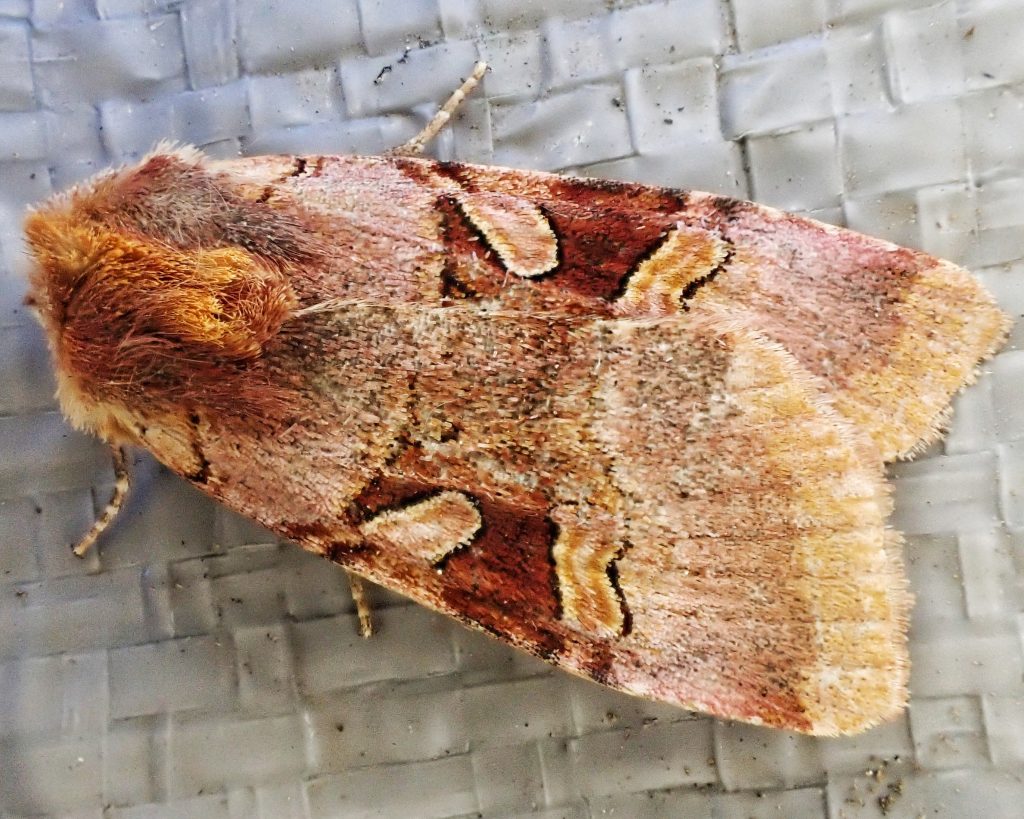
Range– “This species is found across North America but is most widely distributed in the West where it occurs from southern Yukon Territory to the northern Sierra Nevada in California and southern Utah and northern New Mexico in the Rocky Mountains. The range goes east in a narrow north-south distribution near the Canada-United States border to the Atlantic from southern Labrador to northern New England…Xestia oblata is common in forests throughout the Northwest. It does not occur in the dry steppe, but is found in higher mountains in the interior of Oregon and southern Idaho.” PNW Moths | Xestia oblata
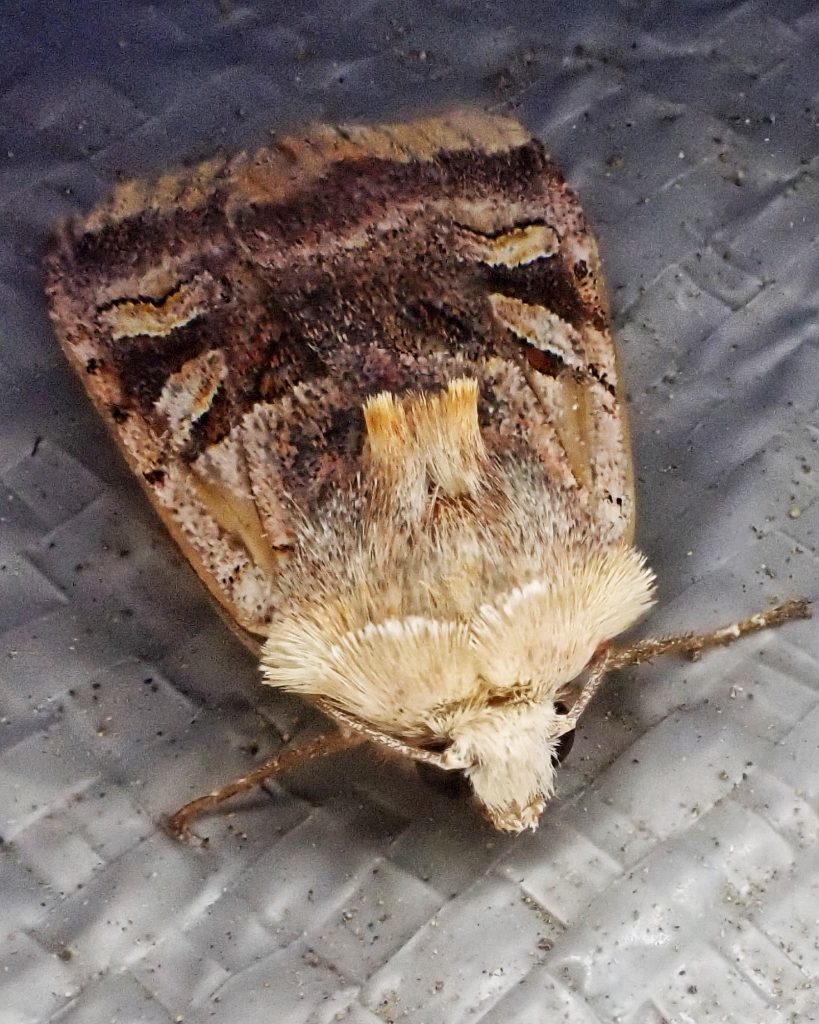
Eats– “This species is a generalist feeding on many kinds of hardwoods such as alders (Alnus spp.) in the Betulaceae, spiraea (Spiraea spp.) in the Rosaceae, and willows (Salix spp.) and quaking aspen (Populus tremuloides) in the Salicaceae.” PNW Moths | Xestia oblata
Eaten by– Presumably a host for parasitoids in Hymenoptera and Diptera, and probably preyed upon by insectivores of all classes, but I can find nothing specific for this species.

Adults active– “Xestia oblata has a long flight period and flies somewhat earlier in the year than many of its close relatives. Records from the Northwest extend from mid-May to September, although most are from July and August. It is nocturnal and comes readily to lights.” PNW Moths | Xestia oblata
Life cycle– “Poorly known. The adults are nocturnal and come to light. There is a single brood each year, with adults flying in summer.” Xestia oblata – University of Alberta Museums Search Site
Etymology of names– Xestia is from the Greek word for ‘polished/smooth’, referring to the glossy forewing of some members of the genus. The specific epithet oblata is from the Latin word for ‘flattened at the poles’, and is probably a reference to the squared off inner edge of the reniform spot.
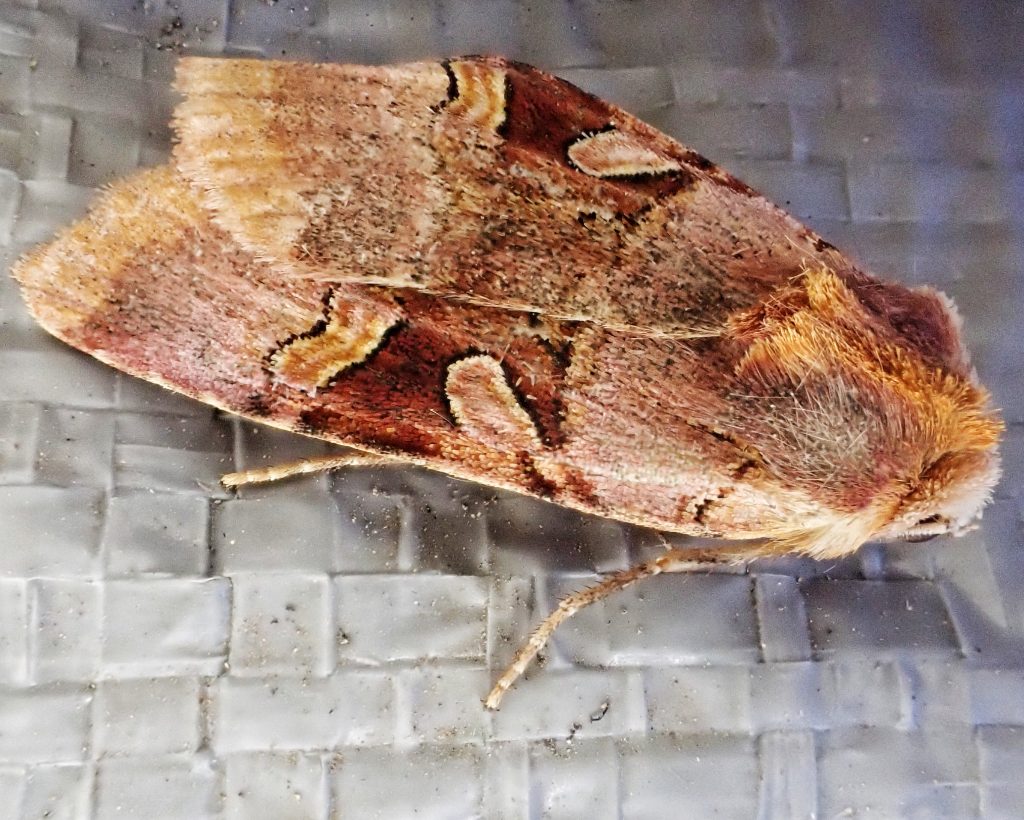
Xestia oblata – University of Alberta Museums Search Site
Species Xestia oblata – Rosy Dart – Hodges#10947 – BugGuide.Net
http://mothphotographersgroup.msstate.edu/species.php?hodges=10947
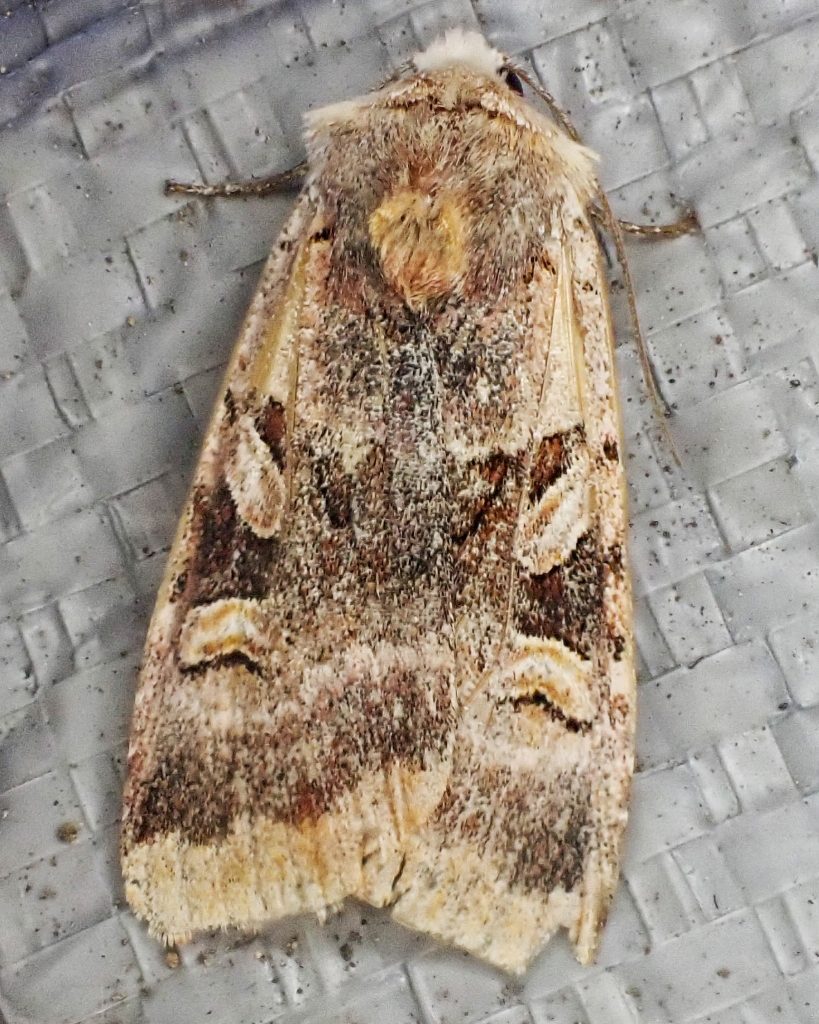
1 thought on “Xestia oblata (Rosy Dart Moth)”